

|
| ČESKÁ REPUBLIKA | CZECH REPUBLIC |
| Jihočeský kraj | South Bohemia (České Budějovice) region |
| Okres: České Budějovice |
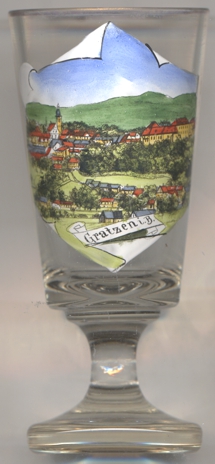 Nové Hrady was founded as a fortress at the southern border of Bohemia and received the status of a town
already in 1281. In 1620, the estate came into possession of the Counts of Buquoy (Bucquoi von Longueval). Karl Bonaventura
Bucquoi von Longueval (1571–1621), Baron of Vaux, Count of Bucquoi, initially served in the Spanish army. In 1618 he
became Imperial commander-in-chief in the Bohemian war, defended Vienna in 1619 and conquered
Moravia after the Battle of the White Mountain (Bílá Hora, today part of Prague).
He captured Bratislava and other cities on the Slovakian mountains but died in battle near
Nové Zámký. Under the rule
of the Buquoy family the old tradition of glassmaking was taken up again in Nové Hrady.
Nové Hrady was founded as a fortress at the southern border of Bohemia and received the status of a town
already in 1281. In 1620, the estate came into possession of the Counts of Buquoy (Bucquoi von Longueval). Karl Bonaventura
Bucquoi von Longueval (1571–1621), Baron of Vaux, Count of Bucquoi, initially served in the Spanish army. In 1618 he
became Imperial commander-in-chief in the Bohemian war, defended Vienna in 1619 and conquered
Moravia after the Battle of the White Mountain (Bílá Hora, today part of Prague).
He captured Bratislava and other cities on the Slovakian mountains but died in battle near
Nové Zámký. Under the rule
of the Buquoy family the old tradition of glassmaking was taken up again in Nové Hrady.
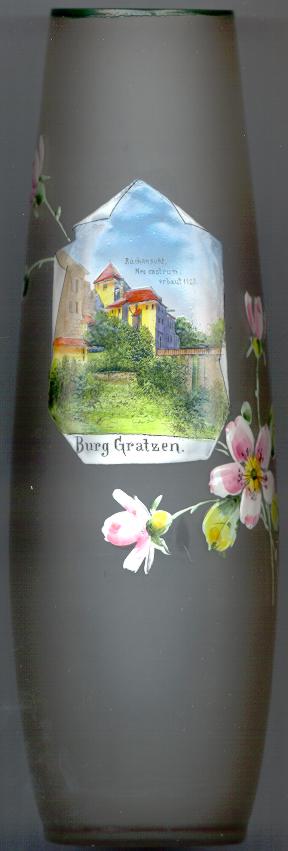
Note: there is another town named Nové Hrady (German: Neuschloss) in the Ústí nad Orlicí district of East Bohemia.
The  old castle [near left, no. 700]
was originally built in 1277. In the 14th century it was enlarged and a moat
around the catle was added. Several times it was destroyed or damaged by fires
and, in 1590, by an earthquake. From 1620 on it was owned by the Bu(c)quoy family
who had it restored. The Bucquoys remained in possession of the castle until 1945.
old castle [near left, no. 700]
was originally built in 1277. In the 14th century it was enlarged and a moat
around the catle was added. Several times it was destroyed or damaged by fires
and, in 1590, by an earthquake. From 1620 on it was owned by the Bu(c)quoy family
who had it restored. The Bucquoys remained in possession of the castle until 1945.
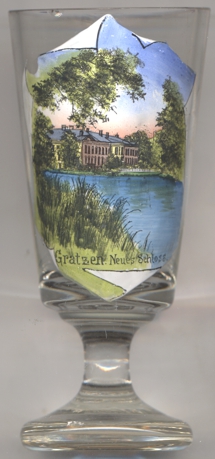
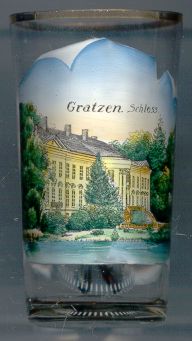 The
The  new castle [near left, no. 4378, and right, no.s. 193, 3231, 3887]
was built 1801–1810 for Count Johann Nepomuk Bucquoi von Longueval when the
old castle was thought not to be representative enough any more.
The plans for the new Empire style château were drawn by the architect
Franz von Werschafeld. Today the castle is used by the Academic and University Center Nové Hrady
and houses institutes of the Czech Academy of Sciences and the University of South Bohemia of
České Budìjovice.
new castle [near left, no. 4378, and right, no.s. 193, 3231, 3887]
was built 1801–1810 for Count Johann Nepomuk Bucquoi von Longueval when the
old castle was thought not to be representative enough any more.
The plans for the new Empire style château were drawn by the architect
Franz von Werschafeld. Today the castle is used by the Academic and University Center Nové Hrady
and houses institutes of the Czech Academy of Sciences and the University of South Bohemia of
České Budìjovice.
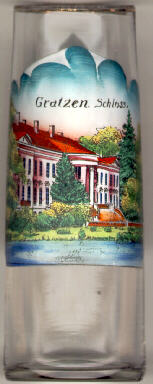
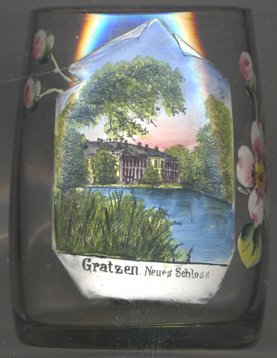
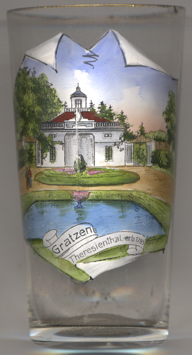 The Theresiental ('Therese valley', in Czech Terezino údolí, today Terčino
údolí) is a landscape garden, including a 10-metre-high waterfall, in the valley of the river
Stropnice, southwest of Nové Hrady. The park was laid out in 1756 by Lord Buquoy for his wife Theresia. The park
originally was named Valloncherie. The park was still in goood shape at the beginning of the 20th century, but
was severely damaged by floods in 1915 and 1936. The park is listed as a national natural monument since 1949, the buildings
are under monumental protection. Since the 1980s, the area is protected from floods by a retention basin.
The Theresiental ('Therese valley', in Czech Terezino údolí, today Terčino
údolí) is a landscape garden, including a 10-metre-high waterfall, in the valley of the river
Stropnice, southwest of Nové Hrady. The park was laid out in 1756 by Lord Buquoy for his wife Theresia. The park
originally was named Valloncherie. The park was still in goood shape at the beginning of the 20th century, but
was severely damaged by floods in 1915 and 1936. The park is listed as a national natural monument since 1949, the buildings
are under monumental protection. Since the 1980s, the area is protected from floods by a retention basin.
The  bathhouse, also named Wenceslas spa, was built in 1788–1797 in
Empire style. After World War II it was used as a recreation home for children. Today, it houses a restaurant and
ballroom.
bathhouse, also named Wenceslas spa, was built in 1788–1797 in
Empire style. After World War II it was used as a recreation home for children. Today, it houses a restaurant and
ballroom.
[https://de.wikipedia.org/wiki/Ter%C4%8Dino_%C3%BAdol%C3%AD]
![[scale]](lineal.jpg)